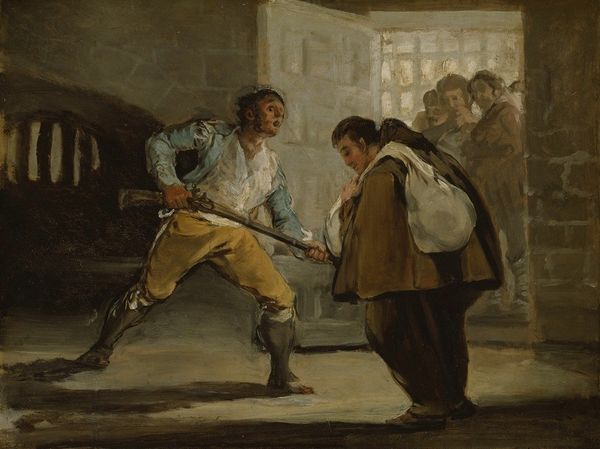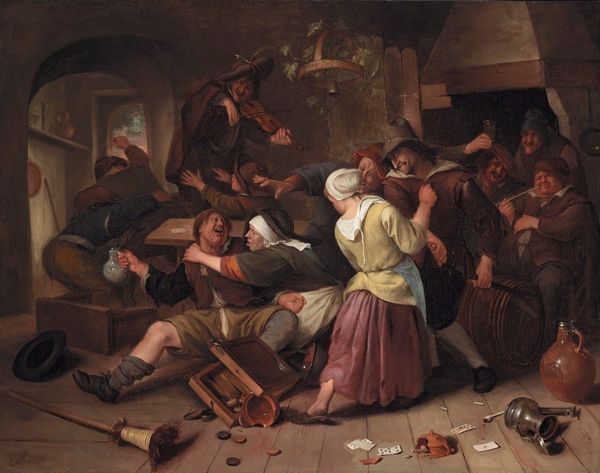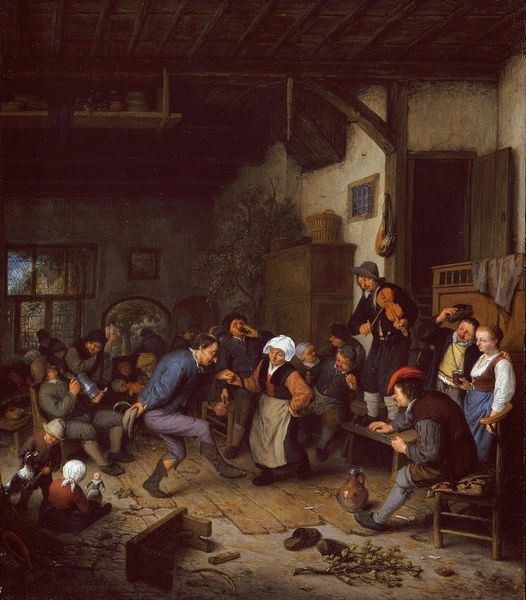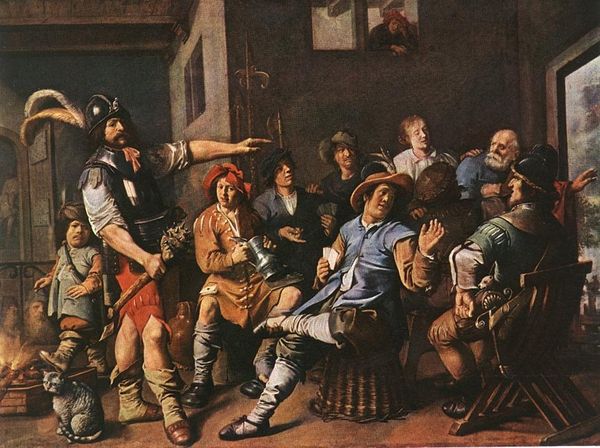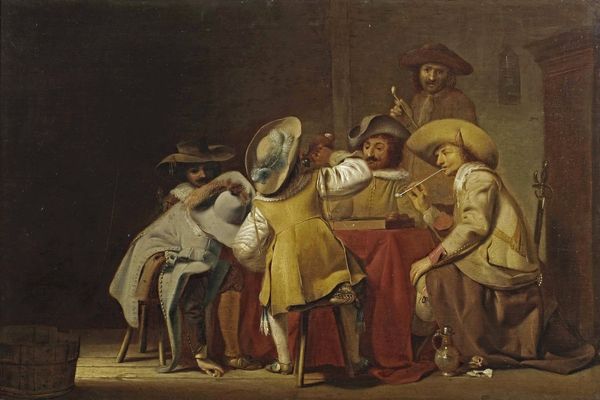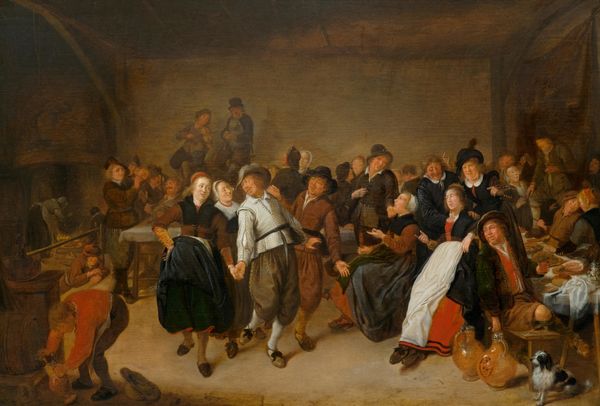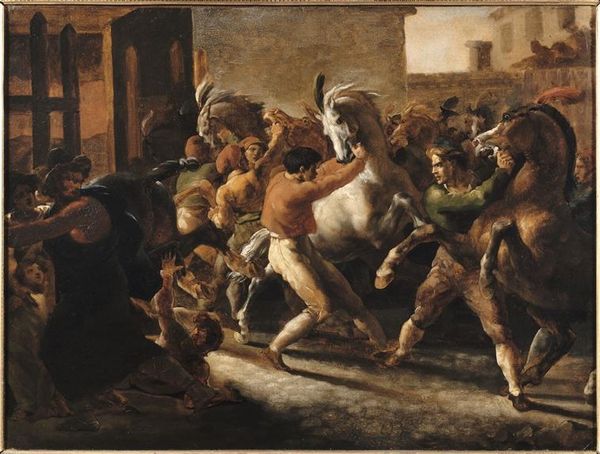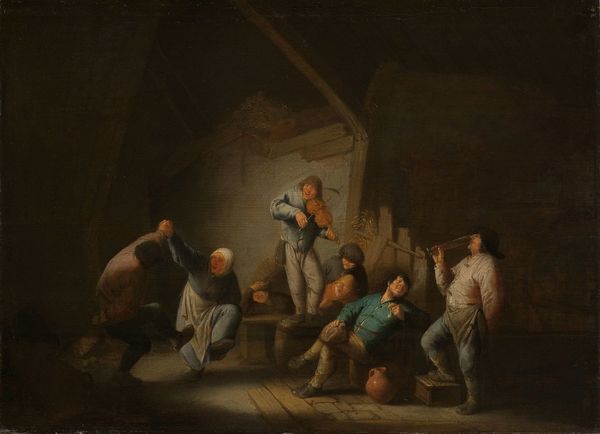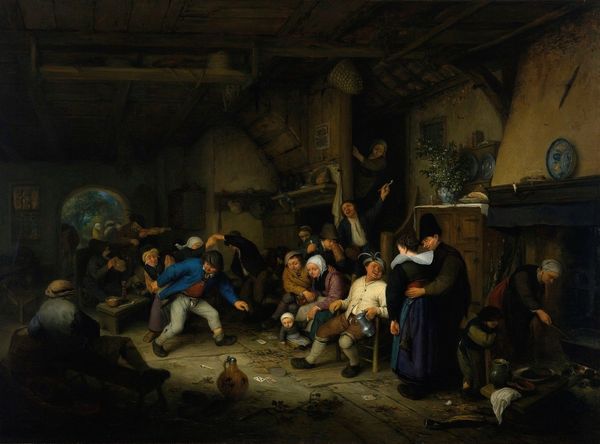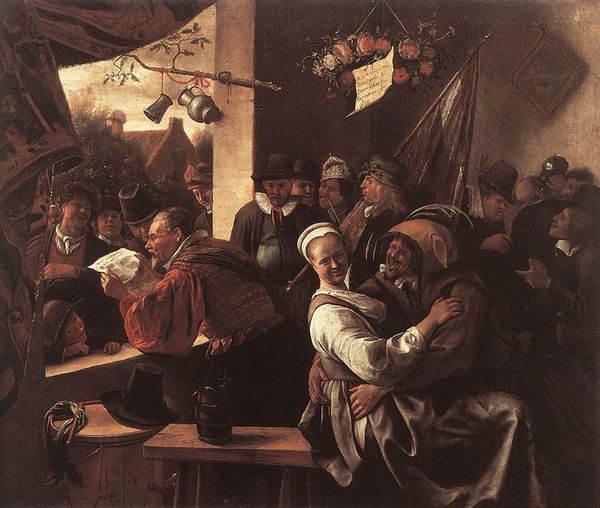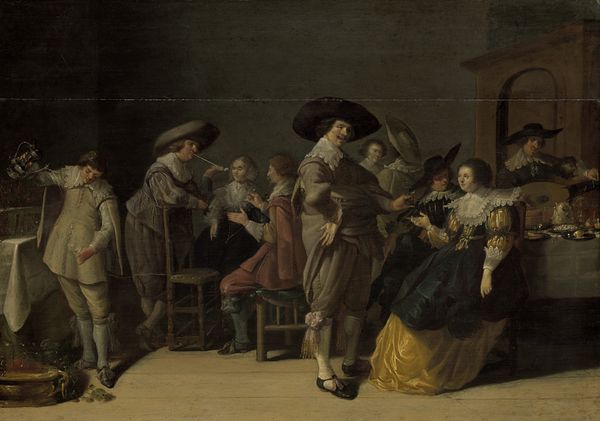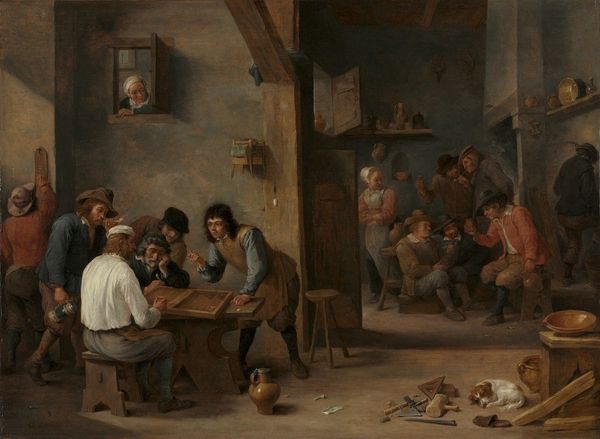
Dimensions: 19.7 x 38.7 cm
Copyright: Public domain
Curator: Alright, let's dive into "The school scene," painted by Francisco de Goya around 1785. It's an oil on canvas and currently residing in the Museo de Zaragoza. Editor: Well, right off the bat, the overall tone is surprisingly chaotic. And…painful, seemingly. There's a lot happening, but someone is getting disciplined—the center of attention is…quite exposed. It feels voyeuristic, almost. Curator: It's a genre scene, capturing a slice of everyday life. We see a schoolroom, yes, but also an element of social commentary is baked in. Goya masterfully organizes the chaos of the school setting with a clever juxtaposition between punishment and scholarship. Observe the bright area around the spanked bottom that almost suggests a second subject: pure childhood innocence on full display in tandem with stern reality of education in a different epoch. Editor: You are correct. The lighting definitely accentuates that area, it's like a spotlight of shame. But the contrast…Goya isn’t merely illustrating, is he? The teacher, unflinching, almost robotic, seems less concerned with education and more with instilling discipline via physical force. Curator: Indeed, and look at the other children’s faces. Some seem almost… detached. Absorbed in study or numb? Others look horrified, which raises a curious idea about social expectations. Academic art of that period wasn’t just pretty pictures but a means to embed didactic moral undertones through narratives. The scene unfolds not just in color, but through carefully arranged moral components that prompt an examination of social mores. Editor: So Goya’s challenging the status quo? It’s like he's saying, “Here, observe—and question." Is that something Goya has explicitly stated himself? Curator: Not exactly verbatim. But you see Goya exploring themes like folly, ignorance, and social injustice throughout his work—this painting can be regarded as his quiet nudge. As well, observe all the different gradations and textures. From the smooth cheeks to the roughly sketched stone floors: materiality becomes part of Goya’s visual repertoire in much the same manner in all his masterpieces. Editor: The dark corners almost hint at a more menacing intent—is that Goya hinting something sinister that resides behind order? I do wonder if it is fair to describe it a didactic commentary on childhood innocence though, when violence assumes this centrality of exposition. Perhaps even something on its very disappearance. But all that detail notwithstanding, Goya remains provocative still—the ability of Romanticists never fails! Curator: It is not merely about childhood I suspect—education itself is his underlying target: it is violent.
Comments
No comments
Be the first to comment and join the conversation on the ultimate creative platform.
